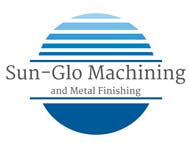Anodizing is an electrochemical process that converts the surface chemistry of metals and other substrates in order to protect against corrosion and scratching. It also enhances the overall appearance and durability of the metal. Anodizing can be done on a range of metals, including aluminum, magnesium, titanium, and even some conductive plastics. There are three types of anodizing which are suited for different uses and have different benefits, but we are going to explore the five things you need to know about what a Type I anodizing company can offer you.
1. How is it done?
Before a type I anodizing company can anodize aluminum, they must properly prepare it by cleaning and rinsing the surface. The aluminum is then placed into a bath of an electrolytic solution, like chromic acid. This solution is electrically conductive, which means a positive electric charge can be applied to the aluminum, and a negative charge can be applied to the plates that are suspended in the electrolyte to create an electric current. Because of the electric current in this circuit, positive ions are attracted to the negative plates and the negative ions are attracted to the positive piece of aluminum.
2. What is Type I anodizing used for?
Type I anodizing companies are often working on aerospace components that are subjected to high stresses—think landing gear. Other Type I anodizing applications include: precision machined components, welded and assembled components, and a paint or prime base. Type I anodizing works best on aluminum with few alloying components.
3. What are the benefits?
Type I anodizing produces a thinner film than Type 2 and 3 anodizing—typically 20 to 100 micro inches per surface—which allows for enhanced drawing and forming characteristics. Type I anodizing is good for tight tolerance parts because it will not change dimensions and is corrosion resistant, especially against atmospheric and saltwater environments. It is great for structures that are near the coast and in high traffic areas. Aluminum oxide film is a chemically active surface for painting; therefore, paint adhesion is among the properties created by Type I anodizing companies. Aluminum oxide film also improves overall adhesion and bond strength.
4. How is it colored?
After the anodizing process is completed, anodized aluminum can be immersed in a bath that contains an inorganic metal, such as nickel or tin. The inorganic metal is deposited in the anodic pores by means of electrolytic current. The color is determined by the amount of time that the part is immersed in the coloring tank. However, because chromic anodizing is the thinnest of the three types, it absorbs less color when dyed. This limits the range of Type I anodizing as a decorative finish, but it can be dyed black for use as a non-reflective, protective coating. In order to achieve this, the temperature of the chromic acid must be raised quite high, but this is a process that cannot be done every day, so Type I anodizing companies must schedule it accordingly. The black dye will always be lighter in appearance than conventional sulphuric black anodize.
5. What are the drawbacks?
Chromic acid has concerning environmental impacts, so there has been an effort to reduce the use of chromic acid anodizing over the last few decades. Some Type I anodizing companies are using phosphoric acid anodizing as well as proprietary boric acid as substitutes.
Sun-Glo Machining and Metal Finishing
quotes@sun-glo.com
800-741-1456
